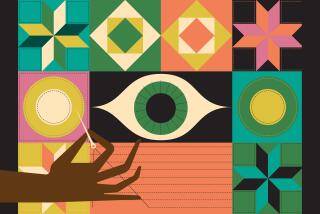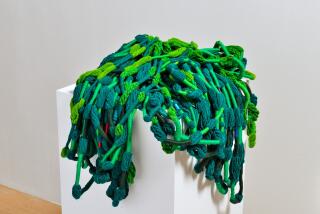High-Tech Textile Design: In the fickle world...
High-Tech Textile Design: In the fickle world of fashion, the wrong print or weave on a piece of fabric can spell disaster for an entire collection.
And effective fabric design is a lot harder than it looks. To create even a small sample, designers have to go through countless cycles of drawing, painting and transferring individual “screens,” or pieces of an image, onto fabric--one color at a time.
But the job is now getting faster and cheaper thanks to an array of high-tech tools showcased at the FabriCAD Forum in Los Angeles earlier this month.
“With just one click you can visualize a whole combination of colors,” said Elizabeth Bowes, director of electronic design for Melrose, a women’s-apparel manufacturer based in Chatsworth. “In the old days, it took about four hours to do just one screen. Now you can respond to your market faster.”
CAD, or computer-aided design, tools in the fabric industry are not entirely new; some manufacturers have used CAD for several years. But the textile industry has been slow to embrace technology--much slower than the graphic design or animation businesses, for example.
“It is a touchy-feely industry,” said FabriCAD organizer Alison Grudier, explaining the industry’s resistance to computers.
But the electronic tools have now gotten so good--making it possible not only to design a garment on a computer screen but to bring that design directly to production--that most designers are at least beginning to take the plunge. Fabric designers, from apparel makers such as Levi Strauss and Guess jeans to Land’s End and Calvin Klein, were on hand for the conference.
Although many of the products came from specialized software developers, others were produced in-house by textile industry firms.
MONA--the Textile Design Explorer is a CD-ROM developed by D Cube, the new technology division of Cone Mills Corp., the world’s largest producer of denim fabrics. MONA is an “image browser” with access to a collection of thousands of pattern samples, which can be downloaded and edited with off-the-shelf CAD software.
“Click on a pattern and you can see exactly how it would look in a garment,” said Michael Keating, general manager of D Cube. On a laptop, Keating selected images that instantly appeared on a toddler’s overalls. As the toddler began walking, the overalls appeared as supple as those in a video.






